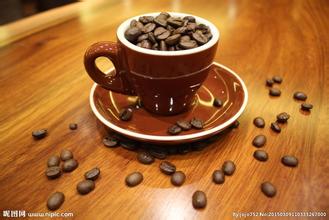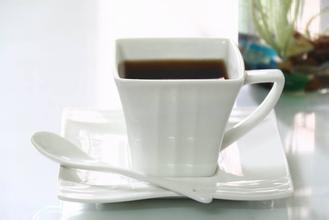Introduction to the flavor of Hawaiian boutique coffee and coffee bean manor with strong acid and special flavor
In the 1970s and 1980s, the price of Kona Coffee experienced several ups and downs, but it was from this period that Kona Coffee established itself as the top coffee in the world. Even though Kona Coffee has been famous all over the world, its production remains relatively low.
Kona coffee has been grown in Kona since the early 19th century, and it has never been interrupted, and only the coffee produced here can be called "Hawaiian Kona". The raw beans of Hawaiian Kona Coffee are usually 100 packages of individual coffee beans. Kona coffee beans are also often used to make mixed coffee along with coffee beans from other parts of the world, and mixed beans of Kona coffee beans and other beans are marked with "Kona mixed beans (KonaBlend)" on the package. Unfortunately, the content of Kona beans in this mixed bean may be very low, and the minimum content of Kona beans in Hawaii that can use the "Kona" label is only 10%. So, if you're not in Kona in Hawaii, it's hard to have 100% Kona coffee beans.
Although Hawaii is often affected by tornadoes, the climatic conditions are very suitable for the coffee industry. There is plenty of rain and sunshine, and there is no worry of frost. In addition, there is a strange natural phenomenon called "free shade". On most days, around 2 o'clock in the afternoon, white clouds appear in the sky, providing the necessary shade for the coffee trees. In fact, it is such superior natural conditions that make Arabica coffee in the Kona region produce more coffee than any other plantation in the world, and always maintain high quality, unique growth and climate environment to create a stronger coffee flavor. For example, 560 kilograms of coffee per hectare are produced in Latin America and 2240 kilograms per hectare in Kona.
But to the regret of coffee fans, only about 1400 hectares of coffee is produced. And because of Hawaii's high income and a large number of tourists, Kona coffee is so expensive that it is even sold as "konablend" (no more than 5 per cent of Kona beans). In recent years, neighboring islands such as maui, kauai and molokai have also begun to grow coffee commercially. The earliest coffee cultivation in Hawaii has adopted the model of large-scale coffee plantations. At that time, coffee had not yet become a widely grown crop in the world, and the production and sale of Kona coffee experienced several ups and downs. After the outbreak of World War I, the demand for coffee increased sharply, and the government bought a lot of coffee for soldiers in order to maintain their combat ability. the rise in demand led to a rise in prices, and Kona coffee was no exception. The period from the outbreak of World War I to 1928 was the golden age of Kona Coffee. But the Great Depression that followed dealt a heavy blow to Kona Coffee. In 1940, the second World War caused the price of coffee to rise again. In order to avoid excessive price increases, the US government set a price cap for coffee. Even so, coffee farmers in Hawaii still got a lot of benefits. During this period, their means of transportation for transporting coffee fruits were all changed from donkeys to jeeps.

Important Notice :
前街咖啡 FrontStreet Coffee has moved to new addredd:
FrontStreet Coffee Address: 315,Donghua East Road,GuangZhou
Tel:020 38364473
- Prev

Introduction of sweet and delicious varieties of Colombian boutique coffee bean manor producing area
No matter in terms of yield or texture, Colombian coffee is first produced by Medellin, which is characterized by full granules, rich nutrition, moderate acidity, good balance, rich aroma and soft taste. In addition to Medellin, the provincial capitals of two neighboring provinces in the south, Armenia and Manizales, are also famous coffee producers
- Next

Java coffee boutique coffee bean flavor manor introduction
Aromatic, full-bodied, with fruit flavor, taste rich and perfect. Java coffee has a wonderful fruit flavor, with a BlackBerry and grapefruit flavor, is a favorite of many coffee gluttons. This coffee has an excellent medium purity, crisp and refreshing taste. It has a fresh flavor and is most suitable for drinking iced coffee in summer. When tasting this coffee, if paired with grapefruit
Related
- Detailed explanation of Jadeite planting Land in Panamanian Jadeite Manor introduction to the grading system of Jadeite competitive bidding, Red bid, Green bid and Rose Summer
- Story of Coffee planting in Brenka region of Costa Rica Stonehenge Manor anaerobic heavy honey treatment of flavor mouth
- What's on the barrel of Blue Mountain Coffee beans?
- Can American coffee also pull flowers? How to use hot American style to pull out a good-looking pattern?
- Can you make a cold extract with coffee beans? What is the right proportion for cold-extracted coffee formula?
- Indonesian PWN Gold Mandrine Coffee Origin Features Flavor How to Chong? Mandolin coffee is American.
- A brief introduction to the flavor characteristics of Brazilian yellow bourbon coffee beans
- What is the effect of different water quality on the flavor of cold-extracted coffee? What kind of water is best for brewing coffee?
- Why do you think of Rose Summer whenever you mention Panamanian coffee?
- Introduction to the characteristics of authentic blue mountain coffee bean producing areas? What is the CIB Coffee Authority in Jamaica?

